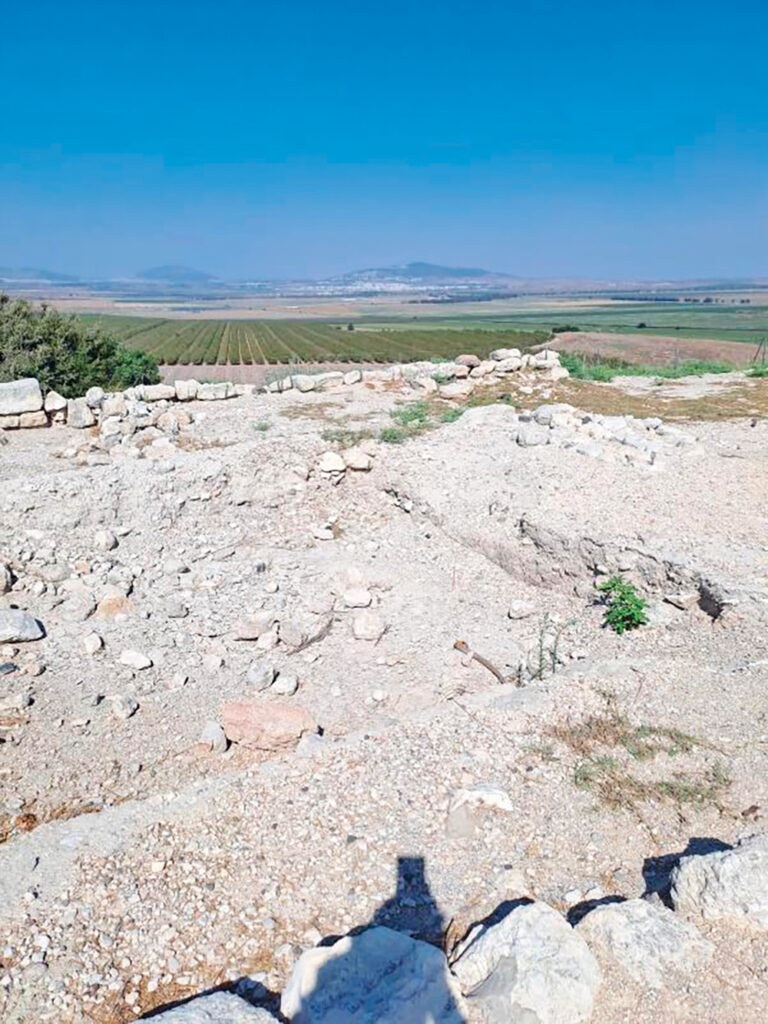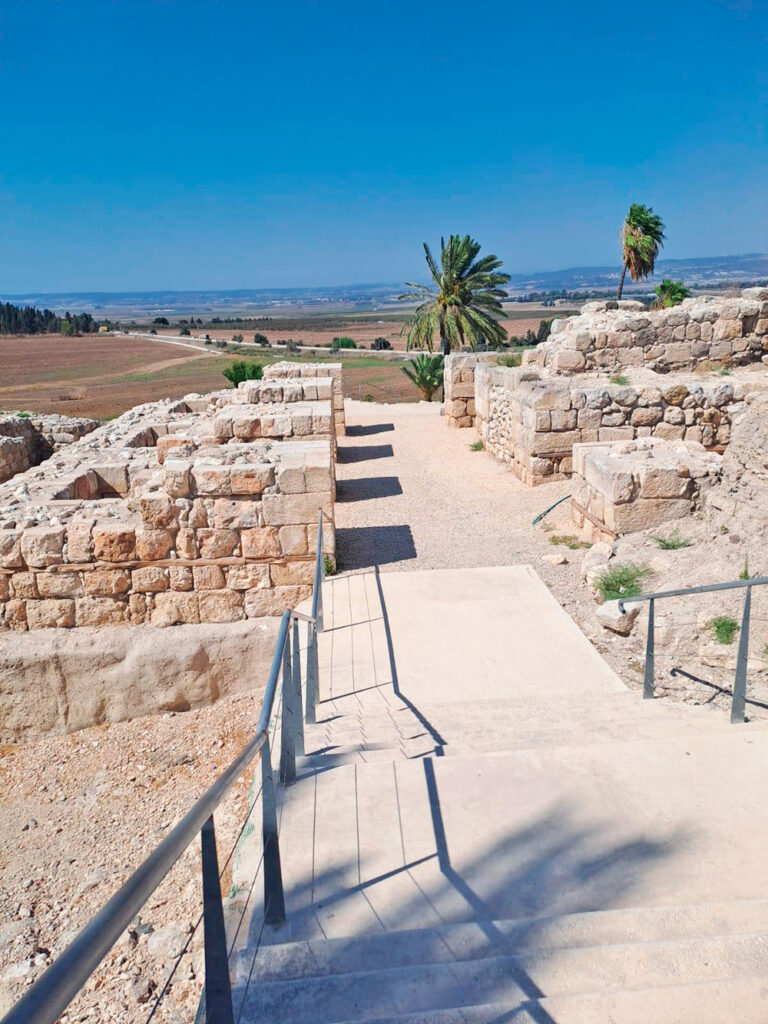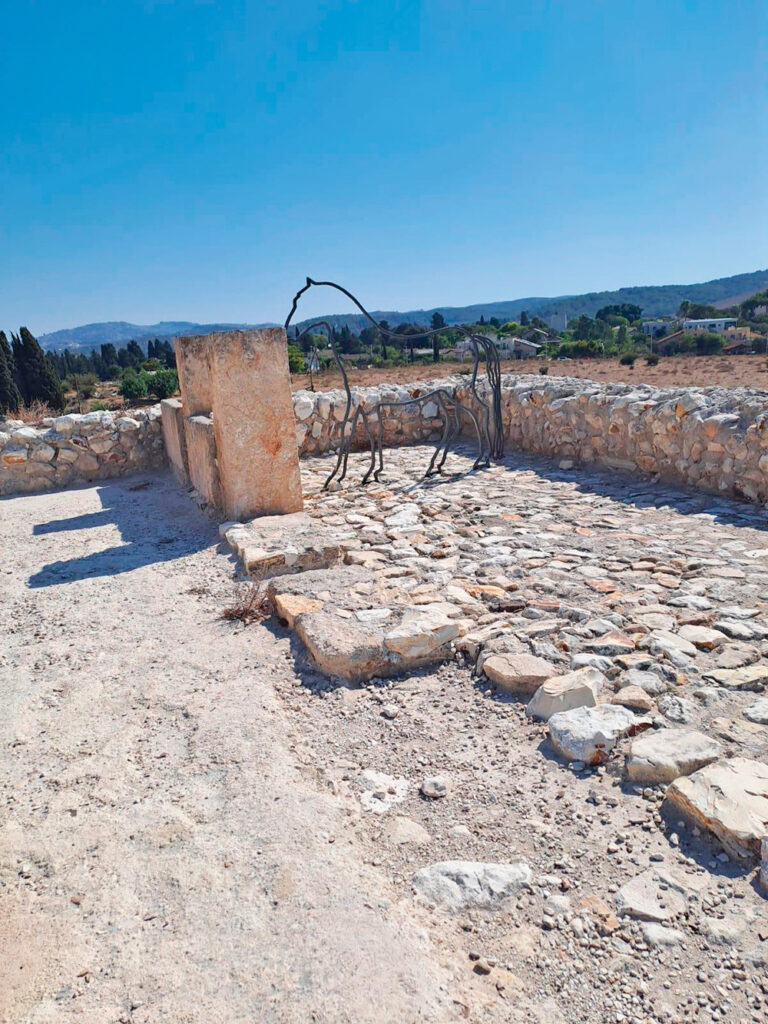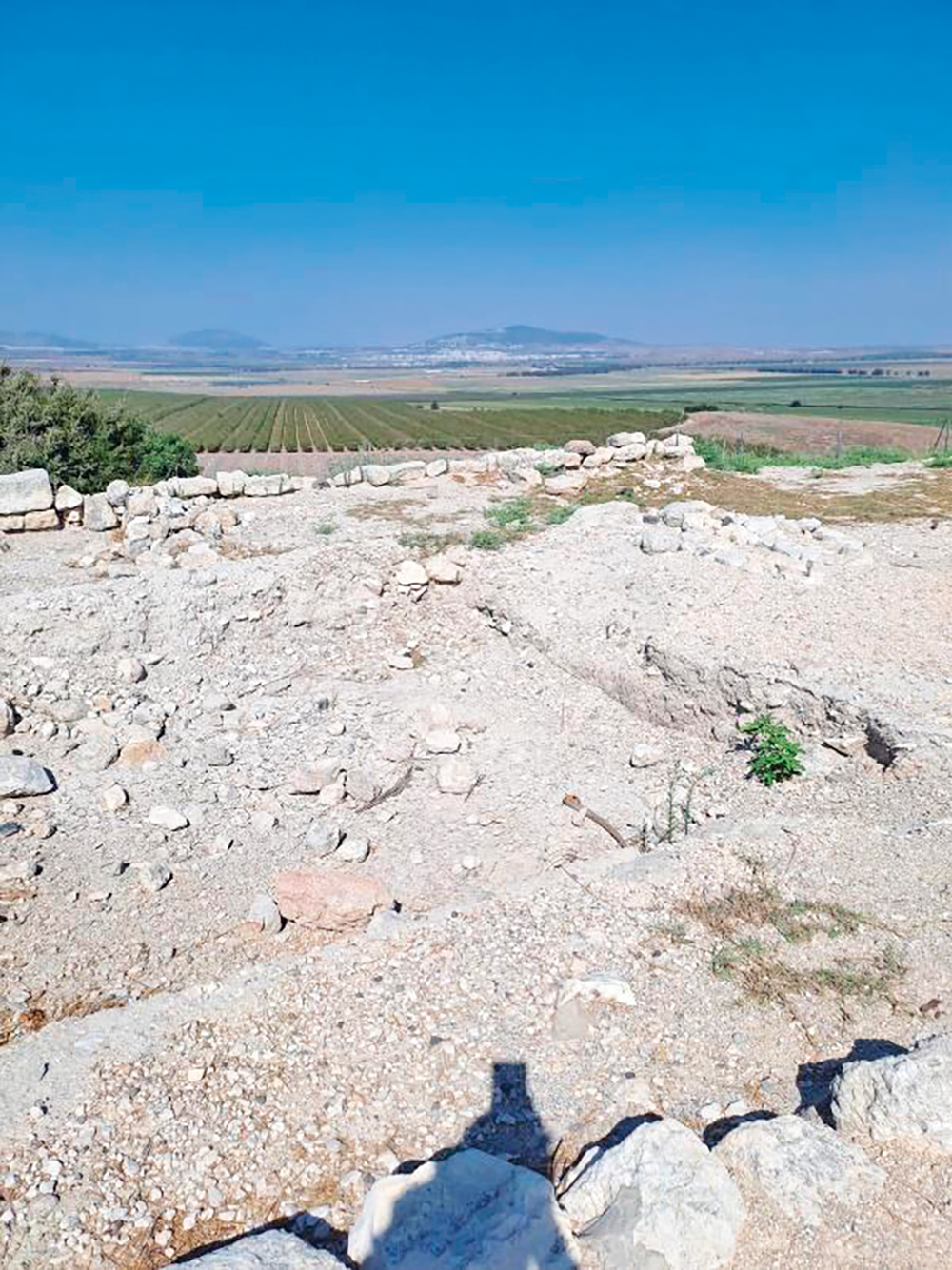
(Information for this article was culled from material put out by the Israel Nature and Parks Authority.)
War has unfortunately been a sad reality throughout history here in the Land of Israel. A visit to the gorgeous and now peaceful nature reserve of Megiddo echoes with the battles that were fought nearby by armies throughout the centuries.
Megiddo was a very important city in ancient times. Its location in the Jezreel Valley gave it control over the Via Maris, the ancient route which connected Egypt in the south to Mesopotamia in the north. It is for this reason that it became famous for the many battles that took place around it.
In the 15th century BCE, some Canaanite cities decided to rebel against Pharaoh Thutmose III, who was controlling the region. Egyptian sources describe the battle at the valley of Meggido, how the city was surprised, and how Egypt ultimately conquered the city after a seven-month siege.

The Navi describes that Bnei Yisrael were not able to conquer Megiddo initially although at times they did extract a tax from its Canaanite inhabitants. (Yehoshua 17, Shoftim 1) According to Melachim A 9, it does seem that Shlomo HaMelech succeeded in conquering Megiddo and building it as a Jewish city.
During the reign of Rechovam, the Navi describes how Pharaoh Shishak led a military campaign through the Land of Israel. (Melachim A 14). Parts of a stela which he erected were discovered at Megiddo. Later on, it was near Megiddo that Yehu Melech Yisrael killed Yehoram. The Navi records how Achazyah Melech Yisrael was also attacked and fled to Megiddo where he perished. (Melachim B 9)
In the eighth century BCE, Tiglat Pilesar III, the Assyrian king, conquered Megiddo, and it became the capital of the Assyrian district in the area. This was part of the exile of the ten tribes of the Israelite Kingdom.

Melachim B describes the tragic death of Yoshiyahu who was killed by Pharaoh Necho in Megiddo. (Melachim B 23). Yoshiyahu was a righteous king who attempted to obliterate idol worship from his kingdom. He thought the Jewish people were so righteous that “a sword will not pass through your land” (Vayikra 26:6), which is why he denied Pharaoh Necho’s troops their request to march through the land of Israel on their way to battle in Mesopotamia. Tragically, he didn’t realize that many people had attached idols to the backs of their doors and worshiped them secretly. On his deathbed, Yoshiyahu admitted his mistake for not adhering to the words of Yirmiyahu (who had advised him to allow Pharoah Necho’s troops to pass through the land) and was ultimately eulogized by Yirmiyahu in the famous kinah which we recite on Tisha B’Av.
As we enter the archeological site of Tel Megiddo, we can walk through the remains of an impressive six-chambered city gate from the Israelite era of Megiddo. Archeologists debate if this gate was from the time of Shlomo HaMelech (10th century BCE), Achav (ninth century BCE) or Yeravam II (eighth century BCE). The city gate in ancient times was not just an entrance into the city, it was the central hub of the town. That’s where judges convened, elders sat and business deals were closed. The six chambers provided optimal space for all of those functions.
Further along on the Tel, we can see the remains of the Temple of the Canaanites. A large circular altar still remains and bears witness to the idolatrous practices of the Canaanites. Impressively, archeologists can see that the temple went out of use during the time of the Israelite conquest.
While exploring Tel Megiddo, we will come across stables on the Northern and Southern ends. This indicates the importance of the commerce of horses in ancient Megiddo. Archeologists believe that these were constructed either during the reign of Yeravam II or Achav.

A highlight of our visit will be an exploration of Megiddo’s water system. This impressive shaft was hewn during the Israelite era to bring water into the city from a nearby spring. Especially in times of war, residents of Meggido did not want to have to leave the protection of the city walls in order to get water.
A visit to Tel Megiddo is like a journey back in time, back to the days of the Canaanites steeped in their idol worship, back to the glorious days of Shlomo HaMelech and back to the stables of the wicked Achav. May we learn from Yoshiyahu HaMelech this Elul and be able to take responsibility for our mistakes in sincere, honest teshuva. K’tiva V’chatima Tova!
Hava Preil is an enthusiastic licensed Israeli tour guide. She grew up on the Upper West Side of Manhattan and holds an MA in Judaic Studies. Hava has developed and taught accredited courses in Tanach and Jewish Ethics for Naaleh/Woodmont College and Cybersem. She currently lives in Givat Ze’ev, Israel with her family. Hava can be reached at IL:054-844-1579, USA: 845-391-0438 or at Havapreil@gmail.com Visit her new website Home – Hava Preil Tours havapreiltours.com! Hava is also offering virtual tours of various sites in Israel- a perfect activity for your school, synagogue or youth group!












